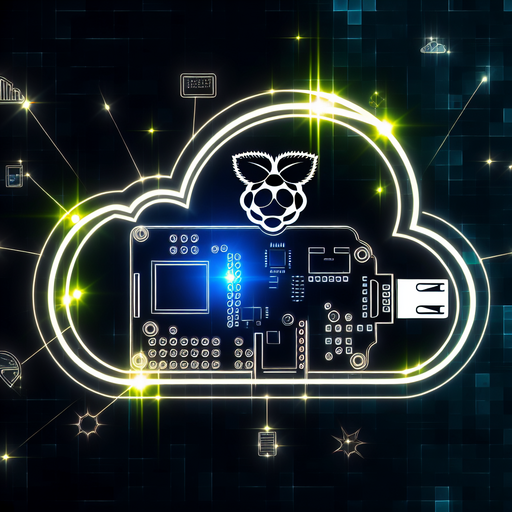Are you looking to set up your own personal cloud server using a Raspberry Pi? Look no further than Nextcloud! Nextcloud is a powerful, open-source cloud platform that allows you to store, share, and access your files from anywhere in the world. In this guide, we’ll walk you through the process of installing Nextcloud on your Raspberry Pi.
Before we get started, here’s what you’ll need:
Get Nextcloud with 1 TB of storage for just up to €3.99 per month.
Try it now for one month free and risk-free.
– A Raspberry Pi (any model will do, but we recommend using a Raspberry Pi 4 for optimal performance)
– A microSD card (8GB or larger)
– A power supply for your Raspberry Pi
– An ethernet cable or Wi-Fi dongle for internet connectivity
– A keyboard and mouse (optional)
– A monitor or TV with an HDMI cable (optional)
Step 1: Setting up your Raspberry Pi
Before we can install Nextcloud, we need to set up our Raspberry Pi. If you haven’t already done so, download the latest version of Raspbian (the official operating system for Raspberry Pi) from the Raspberry Pi website. Follow the instructions provided on the website to install Raspbian onto your microSD card.
Once Raspbian is installed, insert the microSD card into your Raspberry Pi and power it on. Follow the on-screen instructions to set up your Raspberry Pi, including connecting to your Wi-Fi network (if using a Wi-Fi dongle) and updating the software.
Step 2: Installing Apache, PHP, and MariaDB
Nextcloud requires a web server, a PHP server, and a database to run. We’ll be using the Apache web server, PHP, and MariaDB for this installation. Open a terminal window on your Raspberry Pi and enter the following commands to install these packages:
sudo apt update
sudo apt install apache2 php libapache2-mod-php php-mysql mariadb-server
During the installation process, you’ll be prompted to set a root password for MariaDB. Make sure to remember this password, as you’ll need it later on.
Step 3: Setting up the database
Next, we need to create a database and user for Nextcloud to use. Enter the following commands in the terminal to access the MariaDB console and create a new database and user:
sudo mysql -u root -p
Enter the root password when prompted, then run the following queries to create the database, user, and grant permissions:
CREATE DATABASE nextcloud;
CREATE USER ’nextcloud’@’localhost‘ IDENTIFIED BY ‚your_password‘;
GRANT ALL PRIVILEGES ON nextcloud.* TO ’nextcloud’@’localhost‘;
FLUSH PRIVILEGES;
EXIT;
Step 4: Downloading and installing Nextcloud
Now it’s time to download and install Nextcloud. Download the latest version of Nextcloud from the Nextcloud website using the following command in the terminal:
wget https://download.nextcloud.com/server/releases/nextcloud-X.X.X.zip
Replace „X.X.X“ with the version number of Nextcloud you’re downloading. Once the download is complete, unzip the file and move it to the Apache web directory using the following commands:
unzip nextcloud-X.X.X.zip
sudo mv nextcloud /var/www/html/
sudo chown -R www-data:www-data /var/www/html/nextcloud
Step 5: Configuring Apache for Nextcloud
To configure Apache to serve Nextcloud, create a new virtual host file for Nextcloud using the following command:
sudo nano /etc/apache2/sites-available/nextcloud.conf
Add the following configuration to the file, replacing „your_domain“ with your Raspberry Pi’s IP address or domain name:
ServerAdmin admin@your_domain
DocumentRoot /var/www/html/nextcloud
ServerName your_domain
Options +FollowSymlinks
AllowOverride All
Require all granted
ErrorLog ${APACHE_LOG_DIR}/error.log
CustomLog ${APACHE_LOG_DIR}/access.log combined
Save and exit the file, then enable the new virtual host and rewrite module with the following commands:
sudo a2ensite nextcloud.conf
sudo a2enmod rewrite
sudo systemctl restart apache2
Step 6: Setting up Nextcloud
Finally, open a web browser and navigate to your Raspberry Pi’s IP address or domain name to access the Nextcloud setup wizard. Follow the on-screen instructions to complete the installation, entering the database details created earlier and creating an admin account for Nextcloud.
Once the setup is complete, you’ll have your very own cloud server up and running on your Raspberry Pi! You can now access your files, share them with others, and enjoy the benefits of having your own personal cloud storage solution.
In conclusion, setting up Nextcloud on a Raspberry Pi is a straightforward process that allows you to take control of your data and access it from anywhere. Whether you’re looking to store photos, documents, or other files, Nextcloud on the Raspberry Pi is a versatile and convenient solution for all your cloud storage needs.
